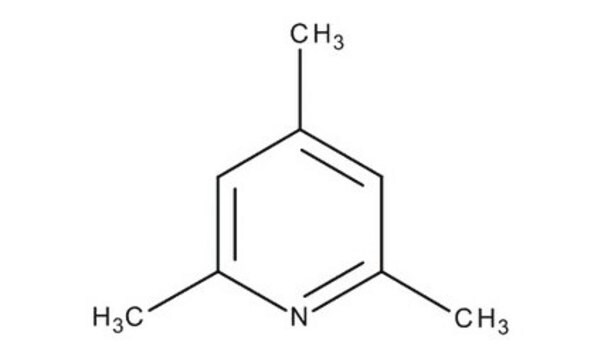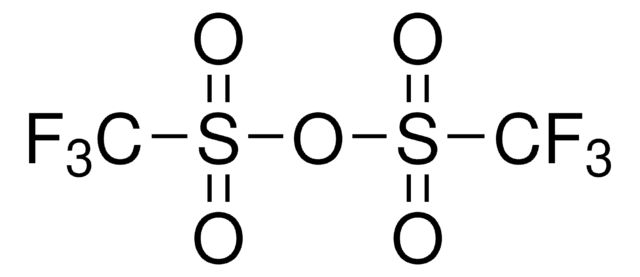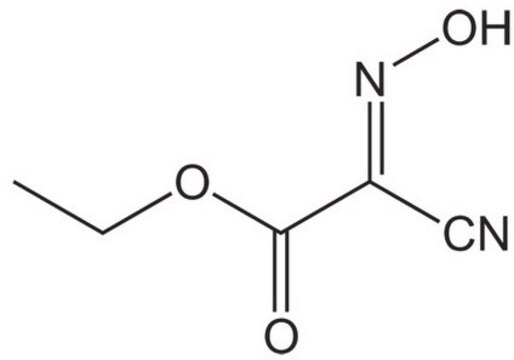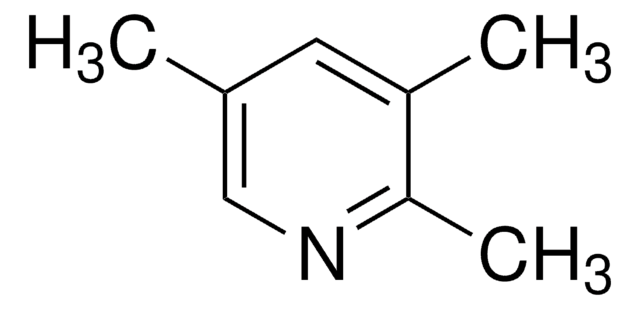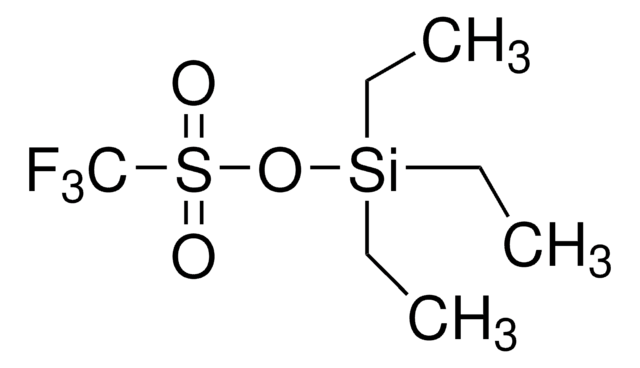Key Documents
142387
2,4,6-Trimethylpyridine
ReagentPlus®, 99%
Synonim(y):
2,4,6-Collidine, sym-Collidine
About This Item
Polecane produkty
Poziom jakości
linia produktu
ReagentPlus®
Próba
99%
Postać
liquid
współczynnik refrakcji
n20/D 1.498 (lit.)
tw
171-172 °C (lit.)
mp
−43 °C (lit.)
gęstość
0.917 g/mL at 25 °C (lit.)
ciąg SMILES
Cc1cc(C)nc(C)c1
InChI
1S/C8H11N/c1-6-4-7(2)9-8(3)5-6/h4-5H,1-3H3
Klucz InChI
BWZVCCNYKMEVEX-UHFFFAOYSA-N
Szukasz podobnych produktów? Odwiedź Przewodnik dotyczący porównywania produktów
Powiązane kategorie
Opis ogólny
2,4,6-Trimethylpyridine can undergo oxidation with potassium permanganate to form 2,4,6-pyridinetricarboxylic acid.
Zastosowanie
Informacje prawne
Hasło ostrzegawcze
Danger
Zwroty wskazujące rodzaj zagrożenia
Zwroty wskazujące środki ostrożności
Klasyfikacja zagrożeń
Acute Tox. 3 Dermal - Acute Tox. 4 Oral - Aquatic Chronic 3 - Eye Irrit. 2 - Flam. Liq. 3 - Skin Irrit. 2 - STOT SE 3
Organy docelowe
Respiratory system
Kod klasy składowania
3 - Flammable liquids
Klasa zagrożenia wodnego (WGK)
WGK 3
Temperatura zapłonu (°F)
131.0 °F - closed cup
Temperatura zapłonu (°C)
55 °C - closed cup
Środki ochrony indywidualnej
Eyeshields, Faceshields, Gloves, type ABEK (EN14387) respirator filter
Wybierz jedną z najnowszych wersji:
Masz już ten produkt?
Dokumenty związane z niedawno zakupionymi produktami zostały zamieszczone w Bibliotece dokumentów.
Klienci oglądali również te produkty
Nasz zespół naukowców ma doświadczenie we wszystkich obszarach badań, w tym w naukach przyrodniczych, materiałoznawstwie, syntezie chemicznej, chromatografii, analityce i wielu innych dziedzinach.
Skontaktuj się z zespołem ds. pomocy technicznej

